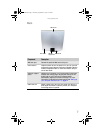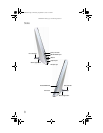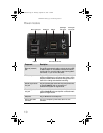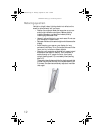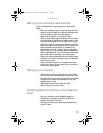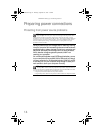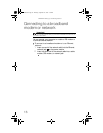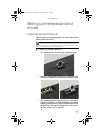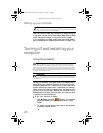
CHAPTER2: Setting Up and Getting Started
14
Preparing power connections
Protecting from power source problems
During a power surge, the voltage level of electricity coming
into your computer can increase to far above normal levels and
cause data loss or system damage. Protect your computer and
peripheral devices by connecting them to a surge protector,
which absorbs voltage surges and prevents them from
reaching your computer.
An uninterruptible power supply (UPS) supplies battery power
to your computer during a power failure. Although you cannot
run your computer for an extended period of time with a UPS,
a UPS lets you run your computer long enough to save your
work and shut down your computer normally.
Warning
High voltages can enter your computer through both the power/data
cable and the modem connection. Protect your computer by using a surge
protector. If you have a telephone or DSL modem, use a surge protector that has
a modem jack. If you have a cable modem, use a surge protector that has an
antenna/cableTV jack. During an electrical storm, unplug both the surge
protector and the modem.
Warning
The AC power module contains peripheral expansion components that
need to connect to the system before to AC power is connected. Make sure that
you connect power components in the following order:
• Plug the power/data cable into the power module.
• Plug the AC power cable into the power module and into an AC power outlet.
8512740.book Page 14 Thursday, September 27, 2007 2:43 PM




